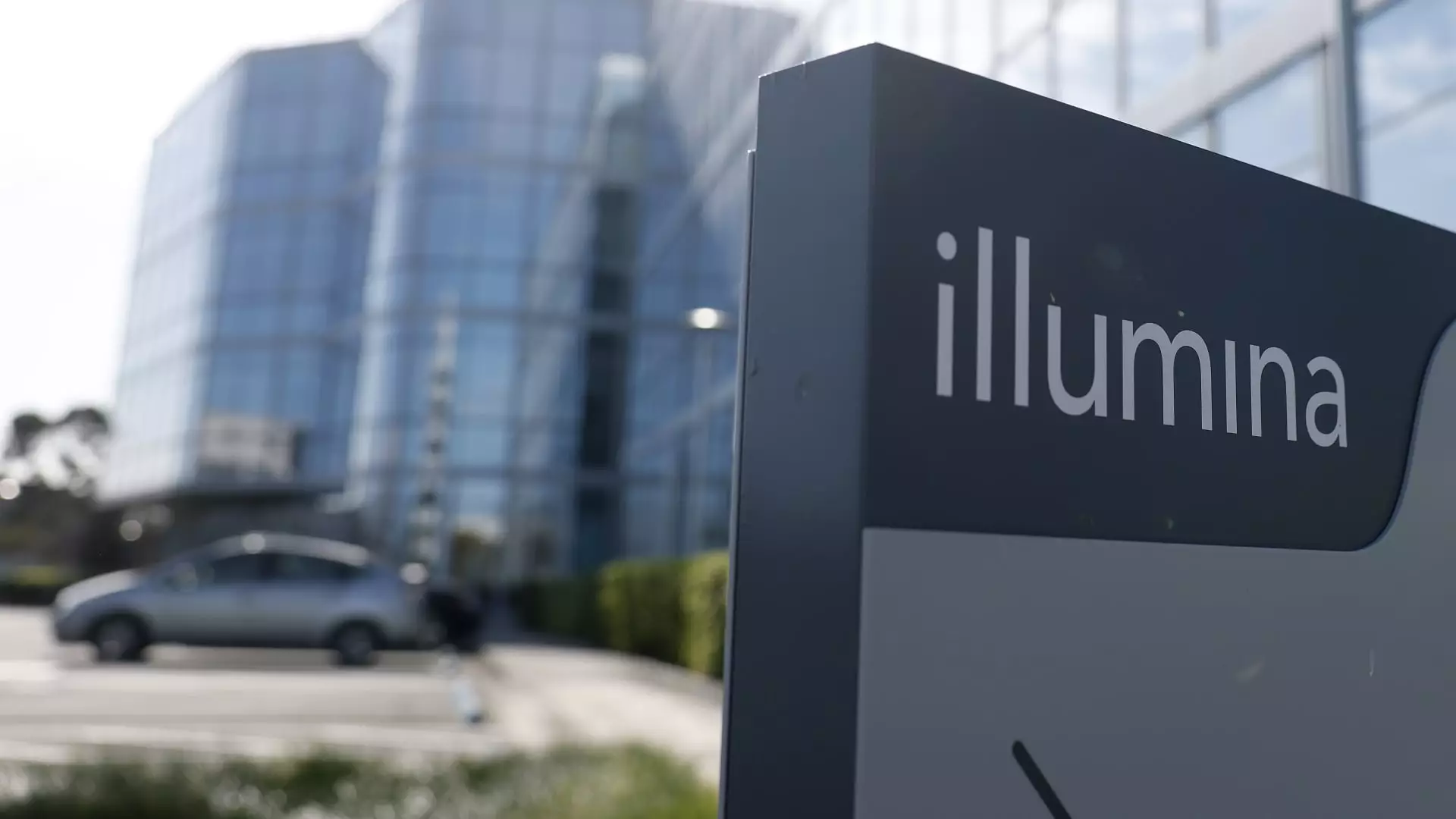Illumina, a recognized leader in genomic analysis and sequencing technology, has experienced a dramatic decline in market value—from a peak of $70 billion to a mere $12.67 billion. As we examine this predicament, it becomes clear that Illumina’s current struggles reflect deeper challenges that the biotechnology sector faces. The ramifications of such a fall are far-reaching, not only for the company itself but also for the broader industry landscape as new ways to assess genomic data emerge.
Market Overdependence and Pandemic Aftermath
At its zenith during the COVID-19 pandemic, Illumina’s performance soared, with a revenue increase of approximately 40% over a single year. However, the post-pandemic demand has revealed a fragile reliance on a temporary market dynamic—primarily fueled by urgent testing needs during the health crisis. As those needs receded, Illumina found itself grappling with excess capacity and diminished demand. This overreliance on short-term spikes in popularity starkly exposes a vital weakness in the company’s strategic planning.
Such dependency should raise alarms among investors who champion diversified portfolios. Illumina must navigate a new reality where the urgency for sequencing technologies is not guaranteed. Without steadfast demand, the company’s reliance on a razor-and-blade business model—where profit is driven mainly through high-margin consumable sales associated with sequencing machines—might stymie long-term growth. The visibility of ongoing revenue streams hinges on sustained interest from clinical clients, a factor that’s no longer a given.
The Grail Avalanche: A Hindering Acquisition
One of the more particularly troubling elements of Illumina’s recent history is the acquisition of its former subsidiary, Grail. Initially spun out in 2016, the decision to reacquire the business for an astonishing $8 billion in 2021 opened a veritable Pandora’s box of issues, including regulatory pushback from the Federal Trade Commission and the European Union. These challenges have significantly burdened Illumina’s financial health and public perception.
Moreover, a $10 million fine from the European Commission for monopolistic practices underscored the heavy toll of this ill-fated acquisition. Organizations that had previously hinged their trust on Illumina’s authority in genomic technologies now find themselves questioning the company’s governance and decision-making capabilities, raising the stakes on shareholder activism and transparency within the company’s operations. With the situation coming to a head, one must ponder whether the recent changes in leadership—most notably with Keith Meister from Corvex Management joining the board—will suffice to instill renewed investor confidence.
Political and Economic Woes: An Unfavorable Climate for Innovation
As if internal struggles were not enough, Illumina has also faced a changing geopolitical climate that has rendered its operations in Russia and China more precarious than ever. Amidst persistent political tensions, companies interacting in these regions face uncertainties and potential backlash that may hinder innovation and operations. With biotechnology relying heavily on global cooperation, such complications put Illumina further at risk.
Additionally, uncertainties surrounding the future of funding from the National Institutes of Health compound the problem. Investors are keenly aware that biotechnological research thrives on a favorable funding environment, yet government instability erodes trust in consistent public investment. Thus, Illumina’s revenue becomes subject to an unpredictable externality—a factor that places major strains on long-term corporate strategies.
Boardroom Dynamics and Leadership Transition
The recent board reshuffle, including the ascendance of Scott Gottlieb as non-executive chairman and Meister’s entry, places an emphasis on strategic adaptability. While new leadership often infuses fresh perspectives, it remains tentative whether they can steer the ship through a steep technological transition—especially towards the upcoming NovaSeq X sequencing technology.
With competing interests amidst board dynamics, there’s a looming question about visionary alignment within the leadership team. Would previous board members’ decisions be overturned for potentially riskier innovations? Transitioning to a new sequencing technology can invigorate future growth, but its immediate impact on revenue could pose challenges. This dynamic lays the groundwork for speculation on whether Illumina’s future direction will be met with enthusiasm or skepticism from the market.
As Illumina confronts these multifaceted challenges, it must ensure that leadership is not merely reactive but actively proactive in redefining its market positioning. The market capitalization decline raises pressing questions about the company’s resilience and strategic adaptability, highlighting an uncertain future for what was once an industry powerhouse. Investor patience will be tested as they assess whether Illumina can recover its former glory or if it will stumble further down the rabbit hole of corporate crises.

